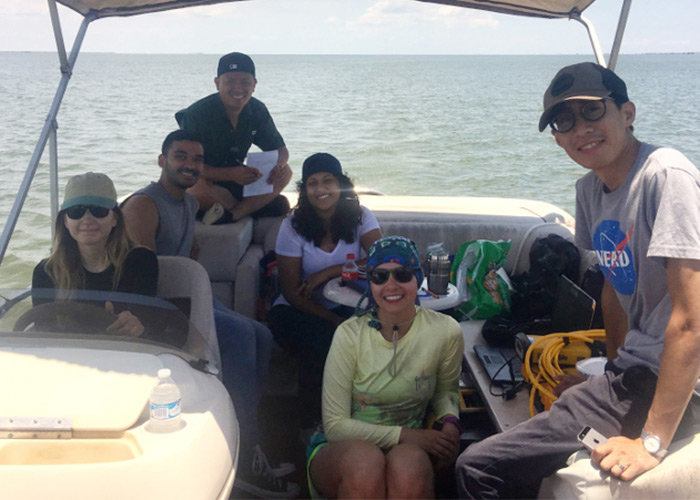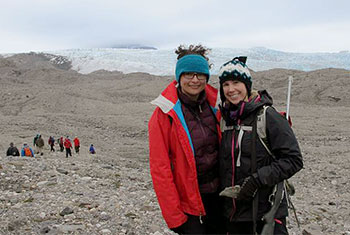Ranking Reflects Research Excellence
In the 2017 Shanghai Academic Ranking of World Universities, the University of Houston entered the top 50 programs in the world for Earth Sciences, ranking at #41, among peers such as University of Texas Austin (#13), Rice University (#31), and Texas A&M University (#101-150).
 Students on a research cruise to map the world’s single largest volcano, Tamu Massif,
which is 1000 miles off the coast of Japan.This ranking includes universities in the U.S. and the rest of the world. Of the U.S.
Earth Science departments, only 22 were ranked higher than UH.
Students on a research cruise to map the world’s single largest volcano, Tamu Massif,
which is 1000 miles off the coast of Japan.This ranking includes universities in the U.S. and the rest of the world. Of the U.S.
Earth Science departments, only 22 were ranked higher than UH.
Rankings on the Rise
“I expect our rankings will continue to rise, as we have managed to keep our original strength in research, while adding a strong group of junior faculty to the department,” said Hua-wei Zhou, chair of the UH Department of Earth and Atmospheric Sciences (EAS). “These junior faculty represent our future.”
The Shanghai Academic Ranking of World Universities assesses a university’s research excellence, with indicators based on the number and quality of publications, the amount of international collaborations, as well as the total number of staff winning significant awards in their field.
Diverse Range of Research
Research within the department is diverse, with UH faculty studying topics such as the movement of tectonic plates, the structure and history of the ocean floor, the likely places to find natural resources such as oil and gas or minerals, and the assessment and prediction of air quality.
 Students collecting sediment and mapping the sea floor of Galveston Bay. They will
be able to compare these results to the changes wrought by Hurricane Harvey.These research studies take faculty all over the world, from the Arctic to the Antarctic,
with students traveling alongside for the opportunity to learn.
Students collecting sediment and mapping the sea floor of Galveston Bay. They will
be able to compare these results to the changes wrought by Hurricane Harvey.These research studies take faculty all over the world, from the Arctic to the Antarctic,
with students traveling alongside for the opportunity to learn.
Within the past few years, students have accompanied faculty on an ocean cruise to map the world’s largest single volcano, traveled to China to map landslides in the Three Gorges region, and traveled to the Antarctic to study the retreat of glaciers.
“We have so many faculty and students that travel abroad for research, it’s easy sometimes to lose track,” Zhou said.
Students Benefit from Research Opportunities
Meanwhile, students in the EAS department benefit from a broad range of field camps, the diversity of which sets UH apart.
 EAS graduate students on field trip to visit glacial deposits on the island of Spitsbergen
near Norway.In addition to the annual Yellowstone Bighorn Research Association field geology program,
the EAS department also hosts an annual geophysics field camp at the UH Coastal Center.
Alongside these annual camps are many other field trips, to places both within Texas,
as well as the rest of the United States.
EAS graduate students on field trip to visit glacial deposits on the island of Spitsbergen
near Norway.In addition to the annual Yellowstone Bighorn Research Association field geology program,
the EAS department also hosts an annual geophysics field camp at the UH Coastal Center.
Alongside these annual camps are many other field trips, to places both within Texas,
as well as the rest of the United States.
“We are pushing forward with teaching as well as research,” Zhou said.
This past summer, students spent part of August collecting sediment and mapping the Galveston Bay sea floor. Hurricane Harvey hit a few weeks later and the students are now returning to Galveston Bay to see what changes the storm wrought.
“We are truly a product of the Houston community,” Zhou said. “We are helping students learn, while also benefiting from Houstonians who are professional geoscientists.”
- Rachel Fairbank, College of Natural Sciences and Mathematics